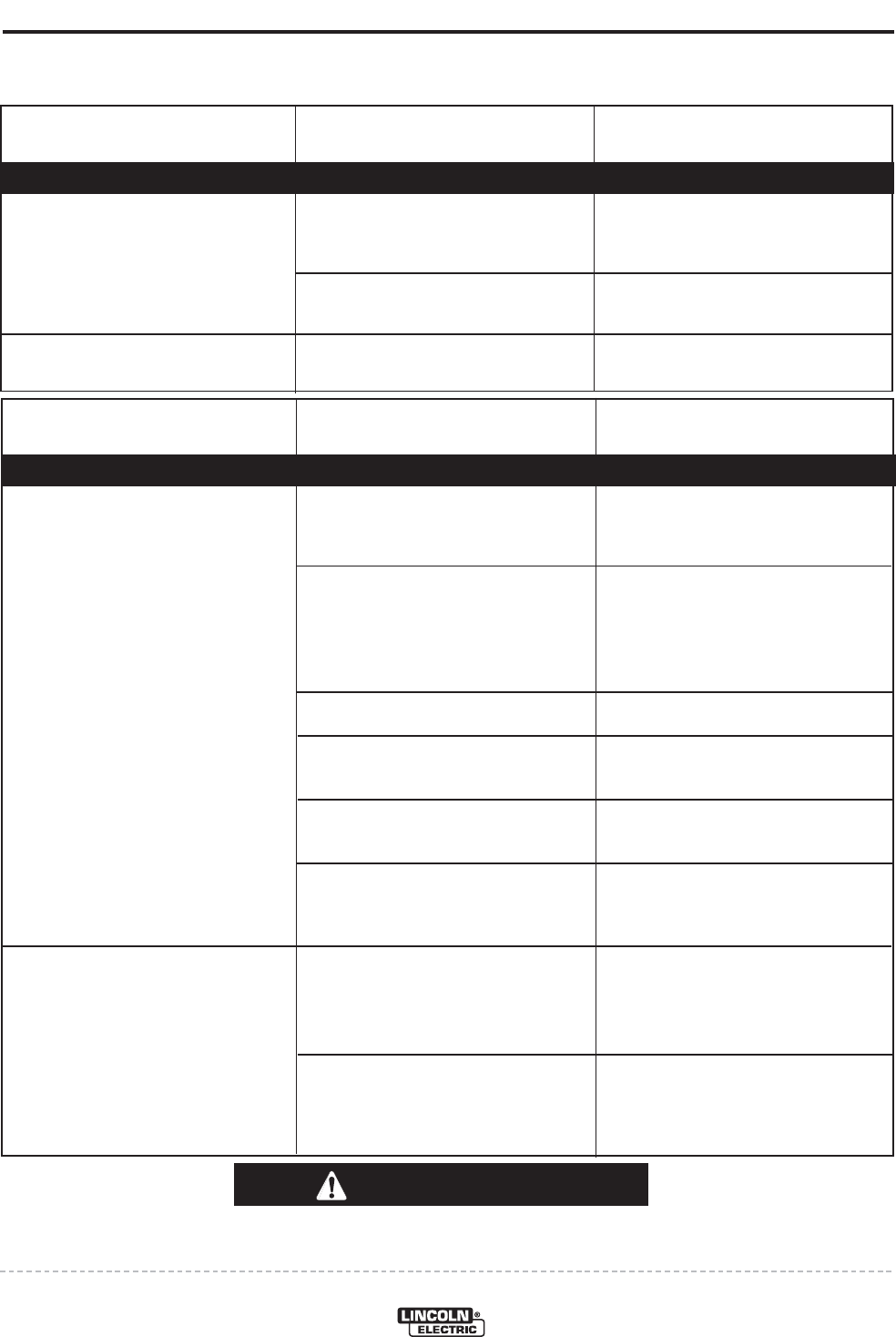
E-7
TROUBLESHOOTING
E-7
POWER WAVE® i400
Observe all Safety Guidelines detailed throughout this manual
TROUBLESHOOTING GUIDE Observe Safety Guidelines
detailed in the beginning of this manual.
CAUTION
If for any reason you do not understand the test procedures or are unable to perform the tests/repairs safely, con-
tact your local authorized Lincoln Electric Field Service Facility for technical assistance.
PROBLEMS
(SYMPTOMS)
POSSIBLE
CAUSE
RECOMMENDED
COURSE OF ACTION
BASIC MACHINE PROBLEMS
Auxiliary receptacle is dead.
“Real Time Clock” no longer func-
tioning
1. Circuit breaker CB2 (near the
115V receptacle) may have
tripped.
2. Fuse F1 (in reconnect area) may
have blown.
1. Control PC Board Battery.
1. Power down and reset CB2.
2. Power down and replace the
fuse.
1. Replace the battery (Type:
BS2032)
PROBLEMS
(SYMPTOMS)
POSSIBLE
CAUSE
RECOMMENDED
COURSE OF ACTION
WELD AND ARC QUALITY PROBLEMS
General degradation of weld per-
formance.
Wire burns back to tip when the arc
is initiated.
1. Wire feed problem.
2. Cabling problems.
3. Loss of, or improper Shielding Gas.
4. Verify weld mode is correct for process.
5. Machine calibration.
6. Secondary current limit has been
reached.
1. Voltage sense lead problem.
2. Wire feed problem.
1. Check for feeding problems. Check actu-
al WFS vs. preset. Verify proper wire
drive and gear ratio has been selected.
2. Check for bad connections, excessive
loops in cable, etc.
NOTE: The presence of heat in the exter-
nal welding circuit indicates poor connec-
tions or undersized cables.
3. Verify gas flow and type are correct.
4. Select the correct weld mode for the
application.
5. Verify the calibration of the output current
and voltage.
6. Long term average current is limited to
450A. Adjust procedure to reduce output
demand.
1. Check sense lead connections. Check
the sense lead configuration and arc
polarity. Make sure Electrode and Work
connections are not reversed.
2. Check for feeding problems. Verify proper
wire drive and gear ratio has been select-
ed.
